Have you ever noticed how the different blockchains are so disconnected from one another? If you think of them as different products then it becomes obvious that there is no common layer for all of them. Another way to put it is that there is a need for an operating system for blockchains so developers can run and deploy smart contracts in an agnostic way. That’s what Cartesi is for.
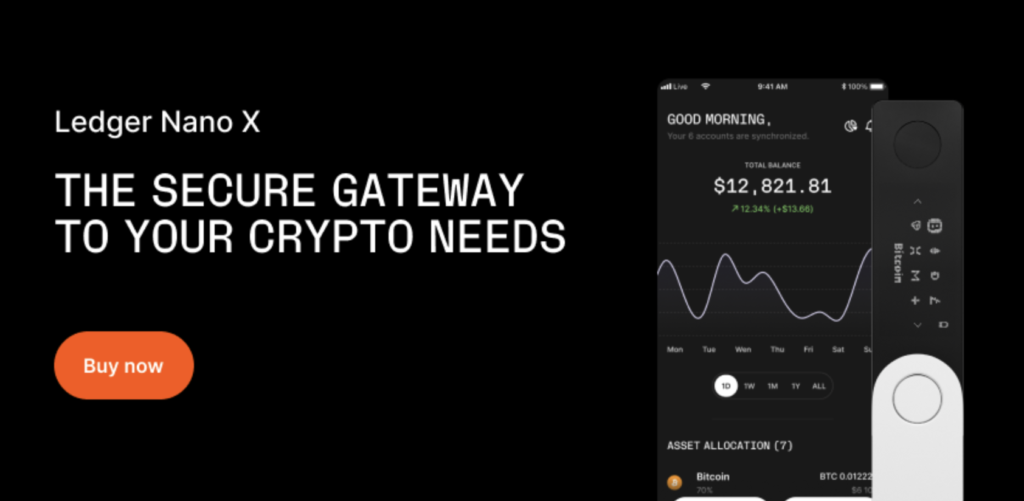
1. What is Cartesi?
Cartesi is the first Blockchain OS. It allows developers to build decentralized logic with Linux and standard programming environments preserving the decentralization and security of blockchains. This means providing the developers with a set of tools, libraries and services so they can develop smart contracts in an agnostic way for the different blockchains out there.
This is based on a belief that you could use an OS as a way to isolate yourself from all the specificities of the different ledgers and navigate between them with a set of libraries allowing you to develop cross-chains Dapps through a linux-based OS. Take a second to digest that. Yes, it sounds big.
It is based on “rollups” technologies that could be deployed anywhere with good performance and cost:
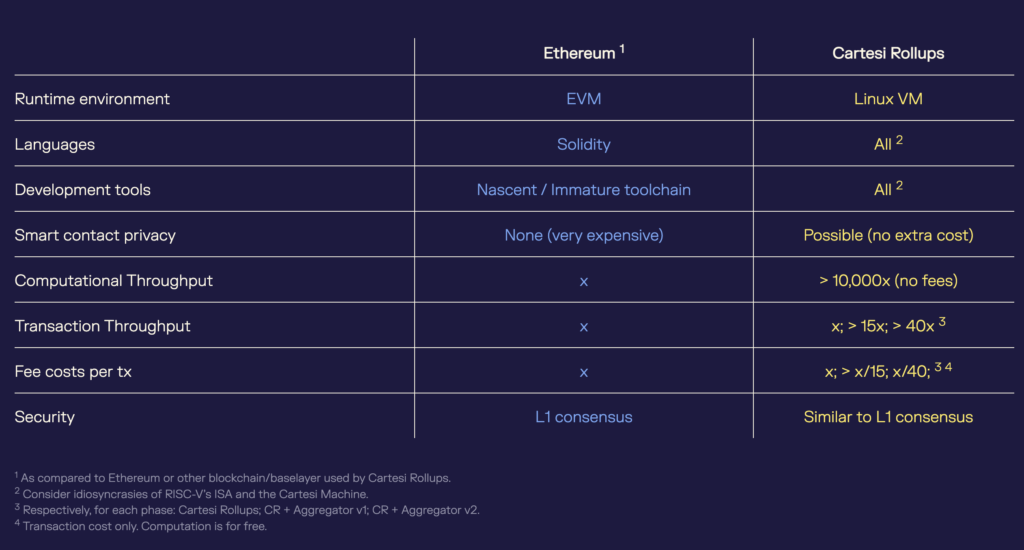
These rollups connect the target blockchain to the OS with a states tracker connecting on-chain and off-chain world described in their impressive whitepaper:
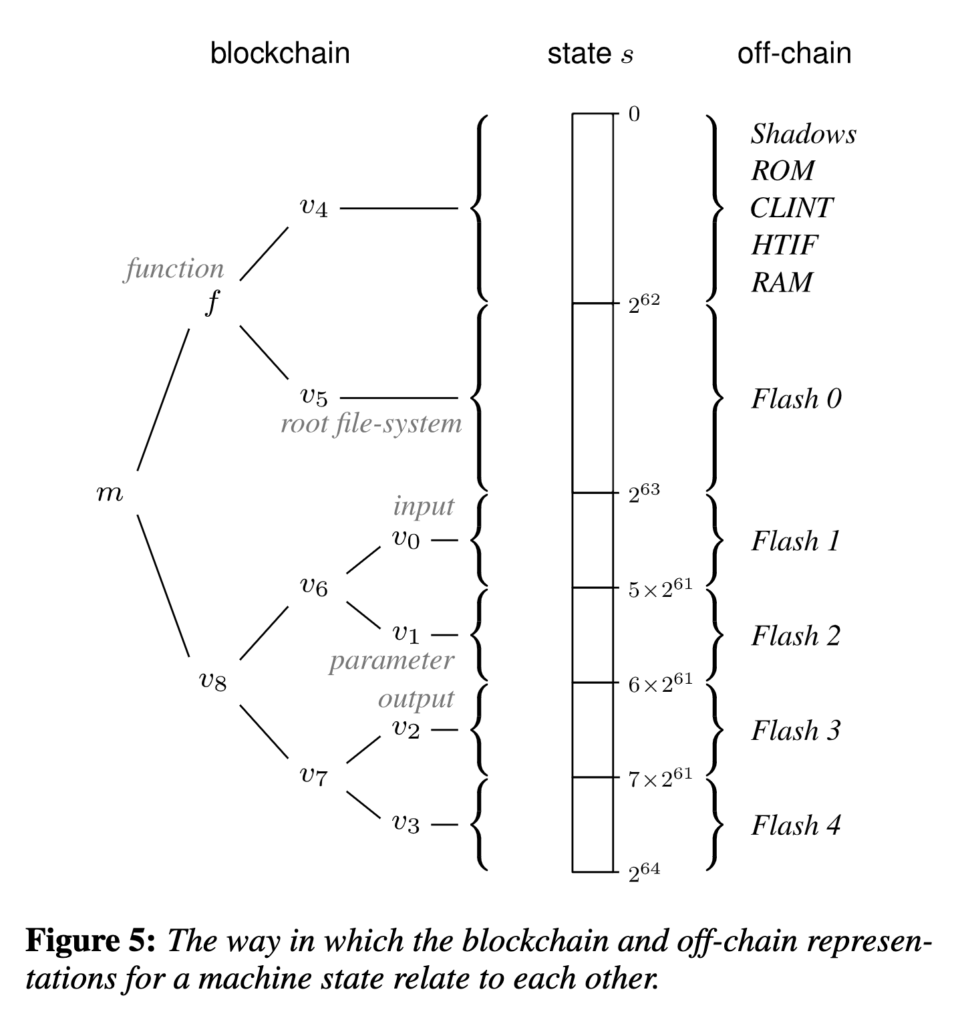
2. How to use Cartesi?
You want to try and create your own rollups? It’s here:
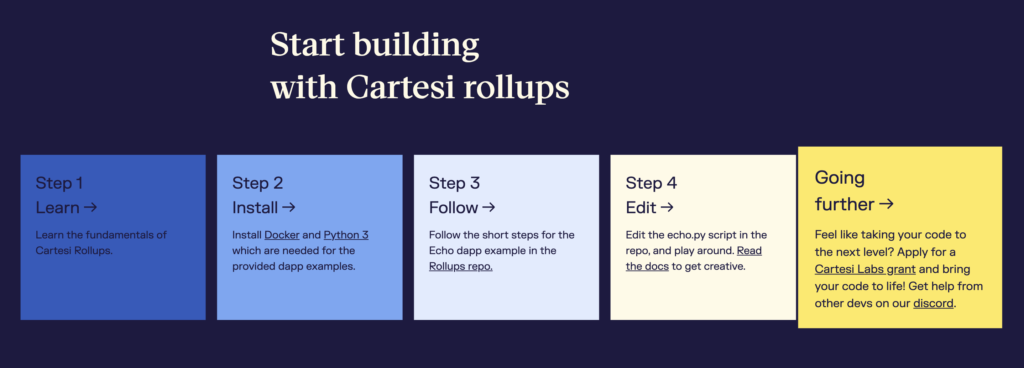
You can run a simple “echo” container with docker is a couple of commands:
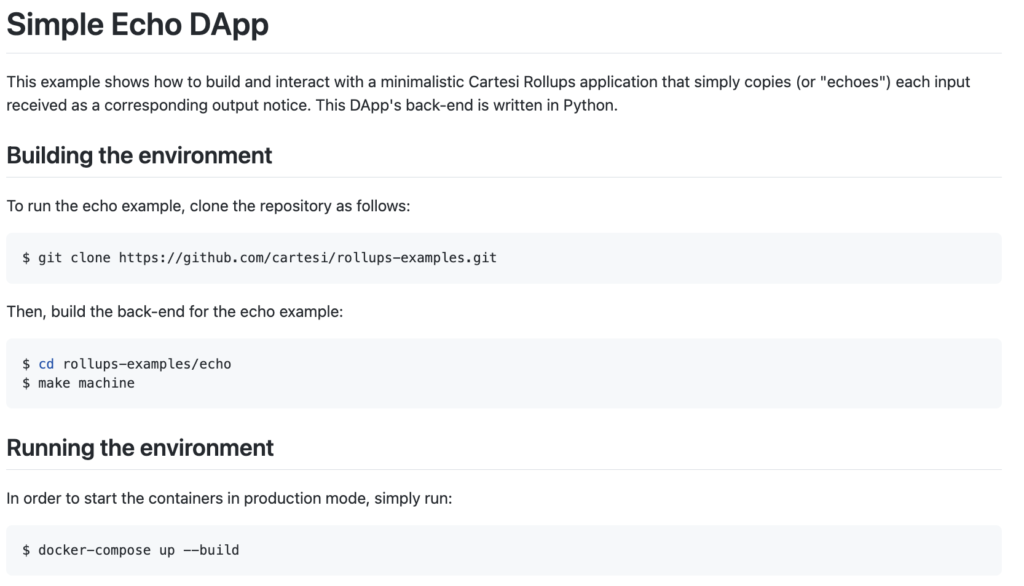
I’ve tried the docker-compose out of curiosity, maybe I’ll go further if I find some time.
The documentation is just good, there are plenty of tutorials like an hello world here to write a basic smart contract in Solidity that will be built using their SDK called Descartes:
3. The team and the roadmap
The team is quite solid (check their Linkedin), with strong engineering, marketing and legal skills:
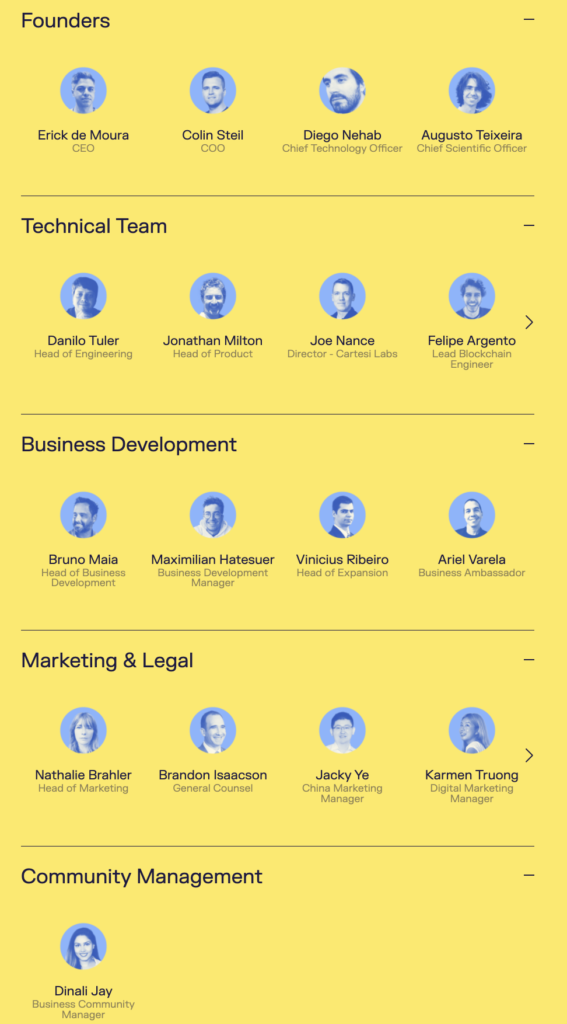
Regarding the roadmap, you can read about here after the rollups got finalized in 2021: “In 2022 we will welcome the first Heroes to our OS. We will organize ideathons, hackathons and speak at prime events. We are aiming for a thriving Cartesi Labs and a robust utility of CTSI. In short: we will start building the strong, decentralized ecosystem we are aiming for.”
4. Cartesi as an investment
The Cartesi token (CTSI) got hammered by the bear market like all tokens. Nothing too special about that:
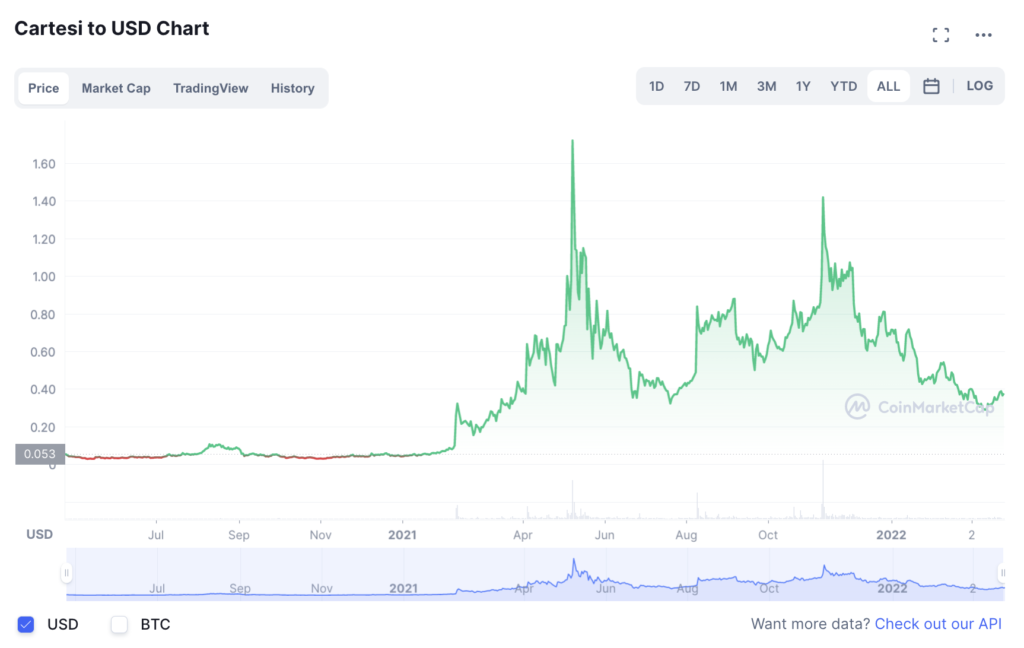
The market cap is $195 million USD, which is small but not tiny:

The circulating supply is half the total supply which leaves room for inflation and price manipulation in the future (not ideal):
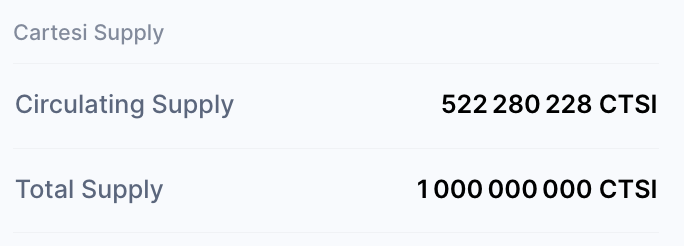
The active addresses are clearly on the rise, which is normal at the start of a project (vesting):
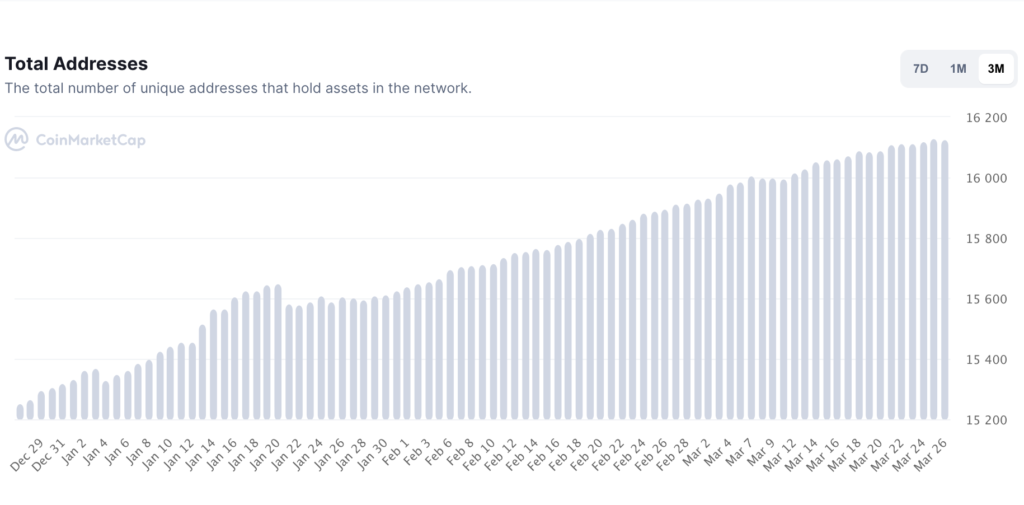
A target market cap for Cartesi is difficult to evaluate because the domain is, by definition, new. However, it’s fair to assume that if this project works, it’s going to track and follow the entire crypto space as it will be possible for developers to deploy anything blockchain-related anywhere. Crypto assets could reach 5T in valuation in the next 2 years (fair value of the logarithmic regression bands), if an OS like Cartesi is able to absorb 0.1% of that growth like Microsoft did in the mid-80s with personal computers, it would put the market cap of Cartesi at 5 billions dollars: it’s potentially a 20x at the end of the next halving in 2024!
5. Conclusion
Cartesi sounds like a very ambitious project that could simply revolutionize the space (like DIA and their oracles) with an operating system for blockchains. It’s a small market cap involving a lot of risk. Is the future of blockchain development an agnostic world with features deployed through rollups compatible cross-ledgers? If that’s the case this investment can be incredibly rewarding, absorbing a percentage of the crypto growth that could lead to a 20x return in a couple of years. For this simple reason, I’m allocating a bit of my portfolio on the token.
Thanks for reading.
Disclaimer: this is not financial advice
